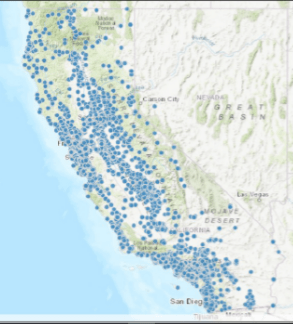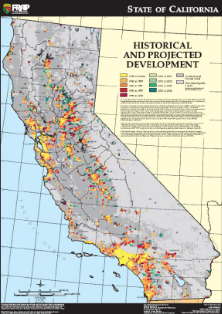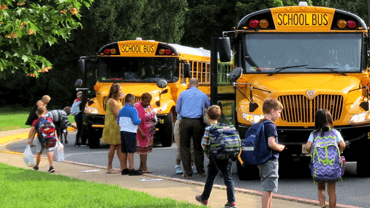 Blog
Blog
Living with Wildfire
- Extreme heat, coupled with a severe drought this spring and summer has combined to significantly raise the risk of wildfire
- There are three preventive activities that can have a positive impact on reducing risk to your property
Living with Wildfire
As we move into the hottest and driest months of 2021, concern with wildfires and the potential loss of life and property grow. Prolonged drought, combined with annual high winds, and low humidity events have created an environment that can drive wildfire activity to levels not previously experienced.
Population Growth
The effect of population growth in the Wildland Urban Interface (WUI) results in more complex and expensive emergency response efforts. Conversion for new housing continues on rangelands and forests near metropolitan areas and in the wildland urban interface (Theobold 2007). Where once only natural resources were threatened by wildland fire in these areas, threats now extend to life and property.1
School Locations - CA State 2

As a part of this development, public agencies hospitals, and schools follow the population that they serve, increasing the risk of property loss due to wildfires. New construction techniques provide structures often hardened to the threats of wildfires, but no structure is fireproof. Often secondary construction or the introduction of sheds and outbuildings can reduce the resilience of structures to fire damage based on construction materials and/or placement to existing structures.
1 https://frap.fire.ca.gov/media/3177/strategyreport2010.pdf - pg. 68
Current State Record Heat and Drought is Raising Wildfire Risk
The western U.S. has seen record-breaking high temperatures due to the development of a heat dome, or mass of warm air, blanketing the Pacific Northwest. A heat dome occurs when a mass of warm air rises into the atmosphere, gets pinched off by the jet stream, and blocks new weather systems from moving in. The extreme heat, coupled with a severe drought this spring and summer in the region, has combined to significantly raise the risk of wildfire caused by both human and natural hazards, such as lightning.3
The number of wildfire incidents compared to the previous year continues to grow, but actions can be taken to reduce the potential for wildfire related losses.
Number of Fires and Acres4:
|
Interval |
Fires |
Acres |
|
January 1, 2021 through July 4, 2021 |
3,856 |
18,499 |
|
January 1, 2020 through July 4, 2020 |
3,297 |
25,901 |
|
5-Year Average (same interval) |
2,630 |
52,623 |
|
2021 Combined YTD (CALFIRE & US Forest Service) |
4,599 |
73,511 |
3 https://www.nesdis.noaa.gov/record-heat-and-drought-raising-wildfire-risk
4 https://www.fire.ca.gov/stats-events/
What can be done to reduce risk?
Structures can experience damage from wildfire activity in several ways.
- Direct Flame – flames in direct contact with structure
- Radiant Heat – heat absorbed by building materials that may reach ignition temperature
- Firebrands / Embers – small smoldering or burning materials
Even with the increase in wildfire activity, there are three preventive activities that can have a positive impact on reducing risk to your property. Addressing conditions that will support the ignition of building materials will reduce the risk of damage.
Defensible Space
Defensible space is the buffer you create between a building on your property and the grass, trees, shrubs, or any wildland area that surround it. This space is needed to slow or stop the spread of wildfire and it helps protect your home from catching fire—either from embers, direct flame contact or radiant heat.
Guidance on establishing defensible spaces around your structures are available at the following links:
https://www.readyforwildfire.org/prepare-for-wildfire/get-ready/defensible-space/
https://www.usfa.fema.gov/wui/outreach/before-wui-fire.html
https://www.nfpa.org/Public-Education/Fire-causes-and-risks/Wildfire/Preparing-homes-for-wildfire
Building Hardening
An inspection for potential structural vulnerabilities should be conducted to determine areas that pose a risk of combustion or supporting combustion during a wildfire event. The inspection should include but not limited to:
Roof |
Rain Gutters |
Vent |
Decks |
Eaves and Soffits |
Fences |
Windows |
Driveways and Access Roads |
Walls |
Address Visibility |
Patio, Playground, Assembly Area, Shade Covers |
|
Building material and retrofit guidance are available at the following links:
https://www.readyforwildfire.org/prepare-for-wildfire/get-ready/hardening-your-home/
Fire Resistant Landscaping
A fire-resistant landscape isn’t necessarily the same thing as a well-maintained yard. This type of landscape uses fire-resistant plants strategically planted to resist the spread of fire. Fire resistant plants are great in California because they are often drought tolerant, too.
Fire-Resistant Plants and Materials
- Create fire-resistant zones with stone walls, patios, decks and roadways.
- Use rock, mulch, flower beds and gardens as ground cover for bare spaces and as effective firebreaks.
- There are no “fire-proof” plants. Select high-moisture plants that grow close to the ground and have a low sap or resin content.
- Choose fire-retardant plant species that resist ignition such as rockrose, ice plant and aloe.
- Select fire-resistant shrubs such as hedging roses, bush honeysuckles, currant, cotoneaster, sumac and shrub apples.
- Plant hardwood, maple, poplar and cherry trees that are less flammable than pine, fir and other conifers.
Fire resistant landscaping guidance are available from:
https://www.readyforwildfire.org/prepare-for-wildfire/get-ready/fire-resistant-landscaping/
Responding to an Emergency
The best time to review your emergency response plan is before the emergency occurs. Does your plan reflect changes in best practices, new behaviors, changes in environment? If your site is designated as an evacuation center, how would this impact your current plans?In addition to the prevention activities noted above, conducting tabletop drills can help to identify opportunities to address changes.
Also, consider these contingencies:
- Utilities
- Power Safety Power Shut-off (PSPS) – electricity may be interrupted for several days
- Natural Gas – service can remain unavailable for extended periods and in some instances resuming service must be coordinated with a representative of the utility company to relight gas pilot lights
- Water – damaged municipal water sources may result in water boil orders
- Sewer – damage to sewer treatment plants may interrupt service
- Transportation
- Closures or restricted direction of travel of roads and freeways will reduce the ability of staff to respond to an emergency
- Contracted bussing may not be available
- Evacuation of large areas may necessitate the identification of secure alternative release points for students
How does your existing plan reflect the threats of a large-scale wildfire? Reviewing how your organization would respond to a wildfire can identify opportunities to reduce risk.
Summary
Keenan offers services to assist in the reduction of risk to your staff and property. Support is available through on-line learning resources, on-site wildfire prevention inspection, and wildfire response tabletop exercises. If you have any questions or need assistance in this area, please contact your Loss Control Representative.
About Trina Caton
Trina Caton is Assistant Vice President in Keenan’s Loss Control Department and is based in our Rancho Cordova office. Trina currently directs and oversees Loss Control internal operations/resources of the department statewide. In this capacity, she is able to assess department and client needs and create, develop and retool the programs and products offered to ensure clients receive high quality products and services.Trina has provided loss control/risk management services for Keenan clients since 1993. She has a thorough knowledge of occupational and environmental regulations and is dedicated to making workplaces safer.
Subscribe
Subscribe to the Keenan Blog






